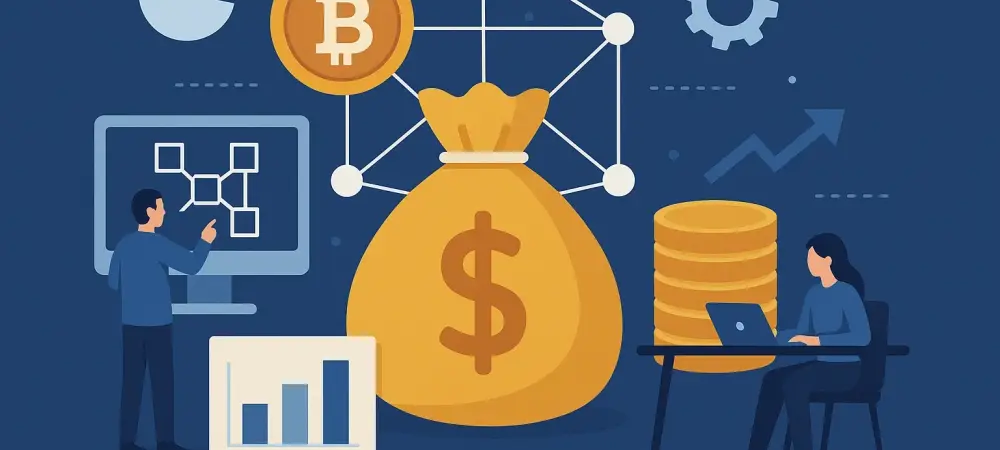In the fast-paced world of global finance, managing complex transactions and maintaining a robust infrastructure has always been a challenge. Blockchain emerges as a potential game-changer, promising heightened transparency, security, and efficiency. This review explores the application of blockchain in treasury management, analyzing its potential to transform traditional banking practices and enhance global payment solutions. Recent collaborations highlight a growing trend toward embracing blockchain technology to improve cross-border transactions.
Understanding Blockchain in Treasury Management
Blockchain technology has evolved from niche applications to mainstream significance in treasury management. Its decentralized nature, governed by immutable records and distributed ledgers, redefines how financial entities handle transactions. Providing a transparent ecosystem, blockchain addresses the long-standing issues of fraud and inefficiency, reshaping the financial landscape by introducing more secure and streamlined operations. This innovation positions blockchain at the forefront of digital transformation in treasury management.
Key Features and Performance of Blockchain Technology
Transparency and Efficiency
Blockchain in treasury applications ensures each transaction is traceable and verified, enhancing transparency in operations. This aspect crucially supports compliance and auditing processes while fostering trust among stakeholders. Efficiency in transaction processing reduces overhead costs and accelerates financial operations, essential for maintaining competitiveness in the global market.
Security and Risk Mitigation
Among blockchain’s most significant advantages are its security features, including cryptographic hashing and consensus algorithms that safeguard against data tampering and unauthorized access. These technical solutions serve to mitigate risks, providing a secure environment for sensitive financial data exchanges and protecting against fraud and cyber threats. In practice, these features assure stakeholders of their transaction reliability and integrity.
Innovations and Emerging Trends
Recent advancements in blockchain-powered treasury management reflect a dynamic shift in industry practices and consumer behavior. Tokenized deposits and AI-driven FX technology, as seen in strategic business partnerships, illustrate blockchain’s versatility and capacity for innovation. Stablecoins and real-time payment platforms are gaining traction, indicative of a shift toward more instantaneous and borderless financial solutions. These trends underscore an ongoing pursuit of technological integration and global efficiency.
Real-World Implementations
Several industries are harnessing blockchain to revolutionize treasury management processes. Strategic collaborations, particularly between Europe and Asia, demonstrate successful implementations and impactful use cases. By empowering cross-border merchant transactions and supplementing SME payment solutions with advanced blockchain capabilities, companies are validating blockchain’s efficacy and establishing a precedent for broader adoption.
Challenges and Limitations
Despite blockchain’s promising potential, the technology faces several hurdles in treasury management, including regulatory constraints and technical difficulties. Variability in global regulatory frameworks complicates seamless integration, while technological barriers such as scalability and interoperability pose additional challenges. Ongoing efforts focus on resolving these issues through dedicated investment in research and development, pushing toward wider acceptance of blockchain solutions.
Future Developments and Opportunities
Looking ahead, blockchain’s trajectory appears promising with anticipated advancements addressing current limitations and uncovering new opportunities. Potential breakthroughs may optimize treasury management further by refining cross-border payment processes or ushering in novel financial instruments. As blockchain gains adoption, long-term impacts could redefine industry practices, propelling ongoing evolution and innovation in finance.
Conclusion
The review of blockchain’s integration into treasury management illustrates this transformative technology’s capabilities and growth trends. While blockchain promises improved transparency, efficiency, and security in financial transactions, challenges remain in regulatory and technical contexts. Future strides in innovation, alongside strategic partnerships, could amplify blockchain’s influence, redefining financial solutions and revolutionizing global payment infrastructures. Understanding blockchain’s adaptability and potential impact is crucial for industry stakeholders navigating this evolving digital landscape.

